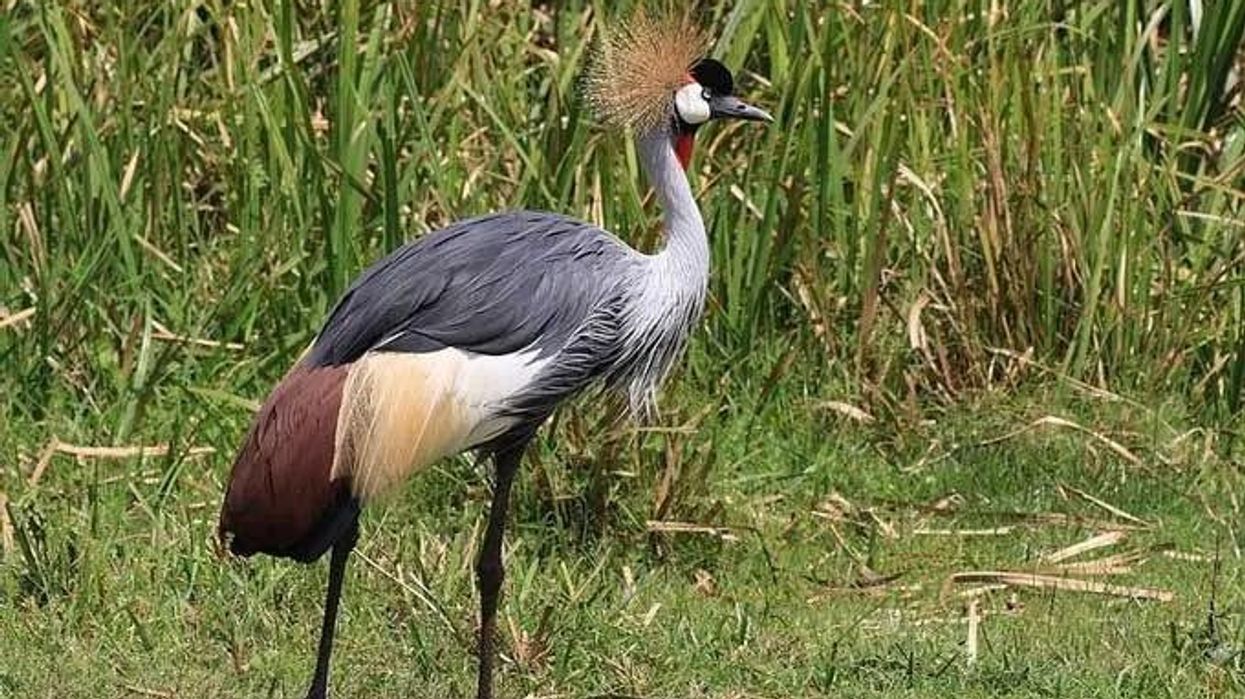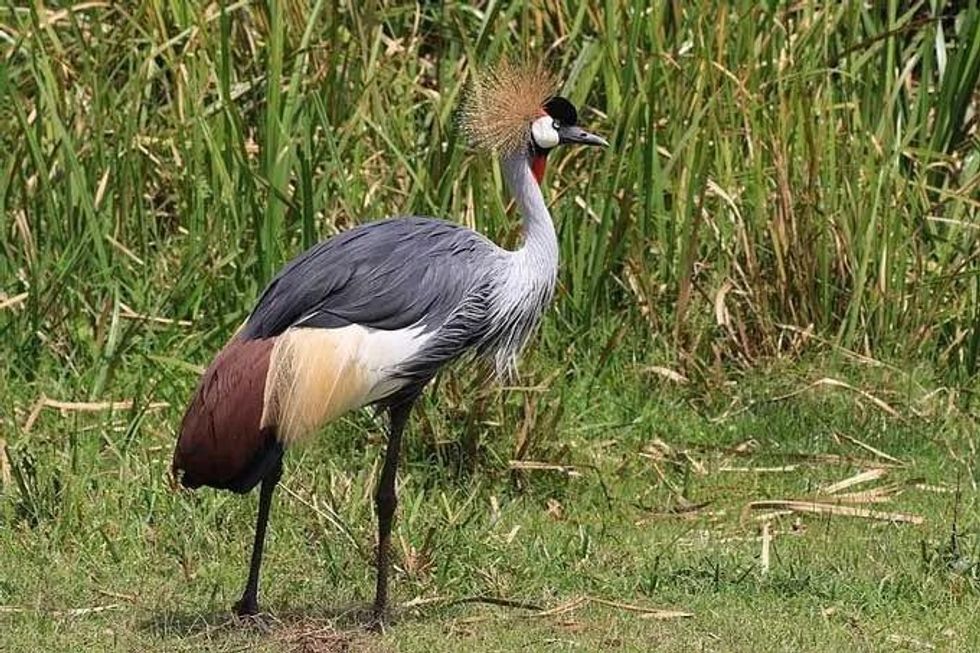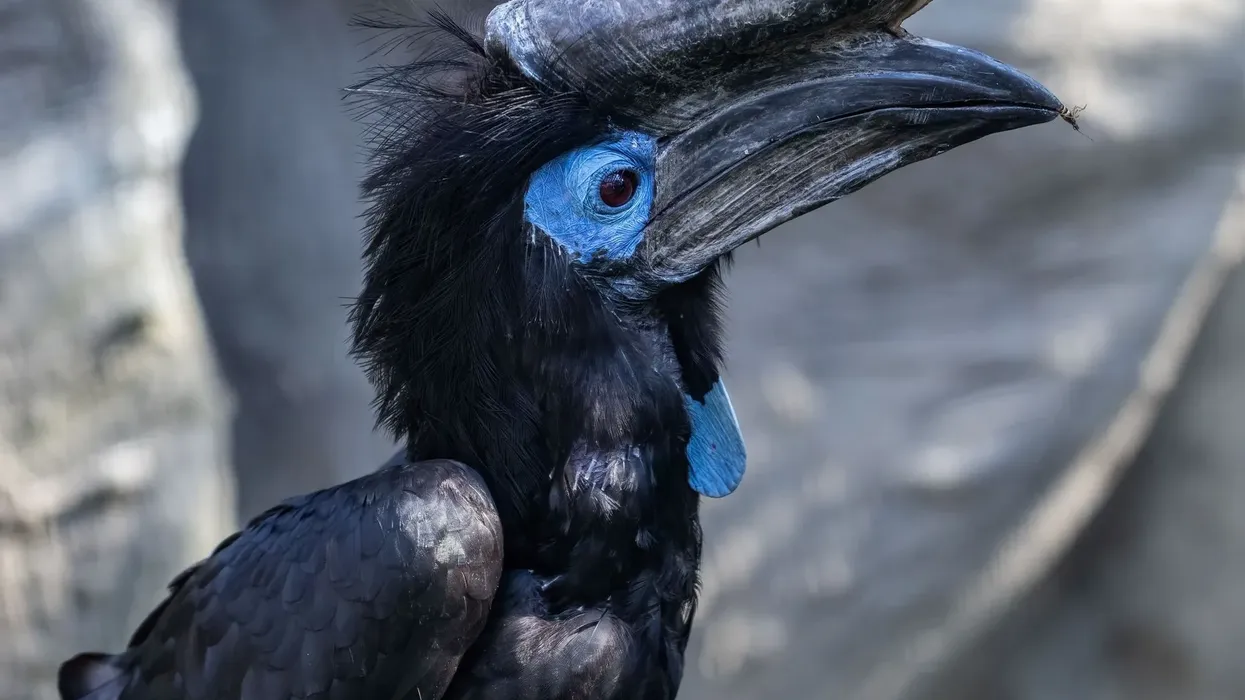Have you ever heard of this giant bird called the grey crowned crane (Balearica regulorum)? There is no mistake in calling them a giant in the bird world as they are over a meter tall.
These birds are also known as the East African crowned crane. They are one of the beautiful and majestic birds that belong to the crane family who loves to dance.
In order to control the reducing population of these birds, South Africa, Zimbabwe, Uganda, and Kenya have offered it protection under the law and are undertaking efforts for its conservation. The East African crowned crane (Balearica regulorum) was mentioned in the Handbook of the Birds of the World Alive.
The preferred habitat for these birds spans across grassland and wetland areas of eastern and southern Africa. is Here are some fun, engaging, and interesting facts on the east African grey crowned crane for your perusal. Afterward, do check our other files on the Siberian crane and green peafowl.
Grey Crowned Crane Interesting Facts
What type of animal is a grey crowned crane?
A grey crowned crane or African crowned crane is a bird that belongs to the Gruidae family, the family of cranes. The grey crowned crane (Balearica regulorum) birds are also known by other names like South African crane, East African crane, golden crowned crane, and gold crested crane.
Grey crowned cranes live in Southern and Eastern Africa. The grey crowned crane or east African crane is the national bird of Uganda.
They really like to dance and are very loud in their sounds. These birds are closely related to the black crowned crane.
What class of animal does a grey crowned crane belong to?
A grey crowned crane is a bird that belongs to the Aves class and comes under the Gruidae family. Its scientific name is Balearica regulorum. The grey crowned crane (Balearica regulorum) is commonly seen in Southern and Eastern Africa. They are large-sized birds who love to dance and make loud honks.
How many grey crowned cranes are there in the world?
There are approximately around 58,000-77,000 grey crowned cranes present in East and South Africa. Grey crowned cranes face threats and are listed under the Endangered species status.
Where does a grey crowned crane live?
A grey crowned crane lives in wetlands like marshes, savannahs, rivers, and grasslands. These South African birds are usually seen in Southern and Eastern Africa. They are found in East Africa near lakes in Kenya and Uganda and other countries like Zimbabwe, Zambia, and Tanzania. They roost in trees, unlike other crane species, thanks to their prehensile hind toe.
What is a grey crowned crane's habitat?
A grey crowned crane is an endangered giant bird that lives in Southern and Eastern Africa and is known to roost in trees. A grey crowned crane lives in wetlands like marshes, savannahs, rivers, and grasslands. They are naturally adaptable and have the ability to survive well in captivity and have longer lifespans than in the wild.
Who do grey crowned cranes live with?
A grey crowned crane usually lives in large groups. Females and males together build nests and can live in groups. These non-migratory birds flock together in a group of 30-150 cranes.
How long does a grey crowned crane live?
A grey crowned is a giant bird and has an average lifespan of 22-25 years. It may vary according to the surroundings.
How do they reproduce?
A grey crowned crane is monogamous and mates throughout life. A large nest is built by a pair of cranes during the breeding season. They perform dances and jumps and runs during this season.
It lays around two to five dirty white eggs and both males and females incubate the eggs for 28-31 days. Chicks can run very soon just after they hatch and they can fly within 56-100 days. Chicks will be sexually mature within the third year.
What is their conservation status?
A grey crowned crane is an Endangered species. It faces many threats like loss of habitat and also removing the birds and their eggs illegally from the wild. The population of these species is decreasing slowly.
Grey Crowned Crane Fun Facts
What do grey crowned cranes look like?
A grey crowned crane or African crane is a giant bird that belongs to the Gruidae family. The color of its body plumage is gray and has white wings with a mixture of feathers with other colors like yellow.
The feathers in the neck are lighter than the rest of the body. There is a crown of yellow feathers with black color on its tips, situated on its head. They have long legs that are gray in color and short gray bills.
There is a gular sac present on the bottom of their chin that is red in color which can be inflated. Grey crowned cranes can roost into trees because of their long hind toes.
How cute are they?
A grey crowned crane is one of the beautiful and majestic animals. They are very cute in appearance with a yellow crown of feathers on their head. They also love to dance and make loud sounds. They are definitely a cute species of birds.
How do they communicate?
A grey crowned crane uses honking sounds to communicate with each other. The sound of the bird can be heard from 3 mi (4.8 km) away. The young ones of the birds use peep, a sharp shrill to communicate with the adult cranes. The parents respond with a purring sound.
How big is a grey crowned crane?
A grey crowned crane has an average height of 44-48 in (111.7-121.9 cm) and a wingspan of around 6-6.5 ft (1.82-1.98 m) and hence it is a giant bird. It is 10 times bigger than a dove.
How fast can a grey crowned crane run?
A grey crowned crane can run fast compared to other birds. Chicks can run as soon as they are hatched.
How much does a grey crowned crane weigh?
On an average scale, a grey crowned crane weighs around 7.5-7.7 lb (3.4-3.5 kg). The weight may slightly vary according to the surroundings.
What are the male and female names of the species?
As the grey crowned crane is a bird, its species is Balearica regulorum. Both male and female grey crowned birds are known as males and females respectively.
What would you call a baby grey crowned crane?
A baby grey crowned crane is usually called a chick.
What do they eat?
Grey crowned cranes are omnivores. They primarily feed on plants, insects, small fishes, and snakes. Insects include grasshoppers, lizards, crickets, and locusts.
As a grey crowned crane has the ability to perch on the trees, they are saved from most of their predators. Their main predators are domestic dogs.
Are they aggressive?
A grey crowned crane can become aggressive to the intruders. An aggressive display called a strut can be seen to the intruders where it begins walking with stiffness and arrogance.
Would they make a good pet?
A grey crowned crane can make a very good pet. They have the ability to survive very well in captivity. They can naturally adapt and can have a longer lifespan in captivity than in the wild. Since they look majestic and beautiful, they are used as decorative pets.
Did you know...
This grey crowned bird is the national bird of Uganda, it is present on the country’s coat of arms and also on the flag. It is also considered a sacred symbol for Zambia, Kenya, and South Africa.
Many people include the picture of grey crowned cranes in their rituals as they have a belief that these birds can bring rain.
Grey crowned cranes and their young
A grey crowned crane can lay one to four eggs. Both the male and female are involved together in the incubation of eggs. The young ones are called chicks and are precocial.
They run as soon as they hatch. Chicks are usually brown in color and can provide camouflage against intruders and attackers. Adults feed the young ones until they become a few months old.
Why are grey crowned cranes endangered?
Grey crowned cranes are endangered species in the crane family. The main reasons for the decline in their population include loss of habitat, removing the birds and their eggs from the wild, and pollution caused by pesticides. All these threats caused a major decline in their population of three generations.
Here at Kidadl, we have carefully created lots of interesting family-friendly animal facts for everyone to discover! Learn more about some other birds from our peahen facts and marbled murrelet facts pages.
You can even occupy yourself at home by coloring in one of our Grey Crowned Crane coloring pages.









